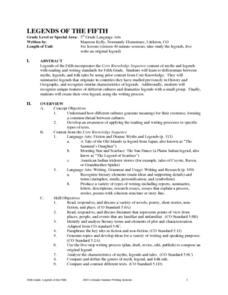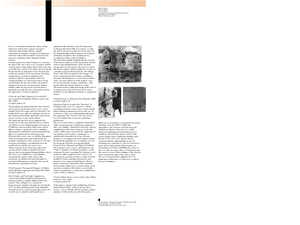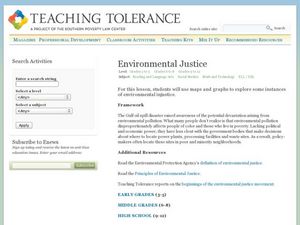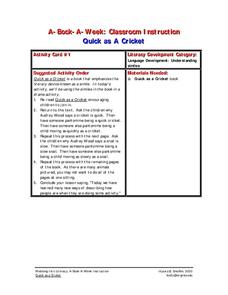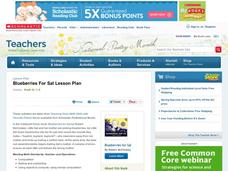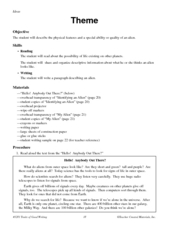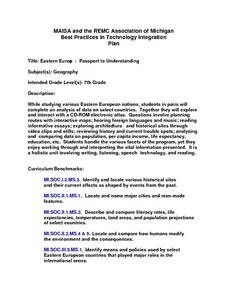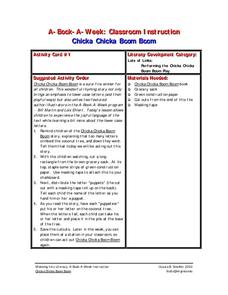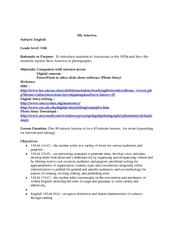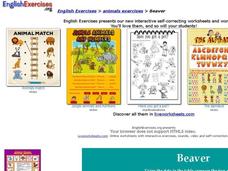Curated OER
Legends of the Fifth
Fifth graders discover the difference between myths, legends, and folk tales. They summarize legends. They work together to dramatize legends and then create their own legend using the writing process. Handouts and worksheets are included.
Curated OER
The Rise of Landscape Painting
Students study the rise of landscape art throughout the 19th century and the specific features of the genre. In this landscape art lesson, students read the definition of landscape art and its precedence in the 19th century. Students...
Curated OER
Analyzing Speaker, Language, and Tone in the Writings of Benjamin Franklin
Pupils analyze writings by Benjamin Franklin. In this Benjamin Franklin lesson plan, students discover the pseudonyms under which Franklin used to write. Pupils compare and contrast 2 selections by Franklin.
Curated OER
Environmental Justice
Students explore the concept of environmental stewardship. In this Gulf Oil Spill lesson, students discuss how environmental pollution affects those how live in poverty at a higher rate than those with more affluence. Students read...
Curated OER
Diaries From the Holocaust
Sixth graders find similarities and differences in two different diary entries. In this Holocaust history meets literary skills lesson, 6th graders read the diary of a soldier or prisoner from the the Auschwitz concentration camp and...
Curated OER
Informal Writing 1
Students examine characteristics of informal writing. Students read through a class story. They rewrite the story so that it sounds if they were explaining the story to a friend. Students discover the use of apostrophes and...
Curated OER
Quick As A Cricket
Students engage in a lesson that is concerned with the concept of reading a story and then they reenact it while performing a pantomime. They answer questions related to the reading and then children move throughout the class imitating...
Curated OER
Blueberries for Sal
Young scholars read the book "Blueberries for Sal" and complete various computation math activities with blueberries. In this computation lesson, students complete number sentences, play guessing games, and solve story problems using...
Curated OER
Theme
Students examine a reading selection. In this descriptive writing lesson, students read an excerpt from "Hello! Anybody Out There?". Students discuss the idea of aliens living on other planets, describe what they think an alien looks...
Curated OER
Ready, Set, Action
Young scholars identify propaganda techniques used in commercials created by their classmates. In this active listening lesson, students use the provided scoring guide to evaluate commercials that their classmates made that feature...
Curated OER
Eastern Europe: Passport to Understanding
Seventh graders explore Eastern Europe. They analyze data on select countries. Students prepare a short oral presentation on the country they researched. They locate their country using an interactive map.
Curated OER
Immigration to the Golden Land: Jewish Life in America
Students examine Jewish life in America. In this social studies lesson, students read the article "We Shall Go to America" which features the experiences of Jewish immigrants in America. Students respond to questions regarding the...
Curated OER
Autobiographical Writing About Memories
Students reflect on fall memories in preparation for creating an autobiographical composition. In this composition lesson, students explore how many writers use the changing seasons, fall in particular, to describe a character's life...
Curated OER
Creating a Web Page
Young scholars complete a unit focusing on the creation of a student-generated website. They read and evaluate articles about business ethics, critique websites, and develop a student-created webpage.
Curated OER
Chicka Chicka Boom Boom
Learners read and discuss the book, "Chicka Chicka Boom Boom." They participate as a group in performing the Chicka Chicka Boom Boom play and complete a variety of activity cards that deal with different avenues of the book. Adjectives...
Curated OER
My America
Eleventh graders compare 1920's America to modern America. In this historical perspectives lesson, 11th graders research both eras in American history using inquiry skills. As a culminating activity, students create digital slide shows...
Curated OER
Every Dog Has Its Day
Students explore the use of imagery in writing. In this writing lesson, students create a writing piece that features sensory images without resorting to the use of clichés.
Curated OER
Greek, Latin and Anglo-Saxon Roots to Better Vocabulary
Seventh graders review the concepts of affixes and roots. They practice common Greek, Latin, and Anglo-Saxon ones which are used to form many words in English. Students develop an awareness of the formation and evolution of words.
Curated OER
Rivers, Maps, and Math
Middle schoolers use maps to locate and label the major rivers of North and South America. Using the internet, they identify forests, grasslands, mountain ranges and other landforms on the continents as well. They compare and contrast...
Curated OER
The Best Hairdo For Your Face
In this career learning exercise, students read the article that is based upon finding the best hairstyle suited for particular types of faces.
Curated OER
The Art Of Persuasion
Students engage in a lesson that focuses upon the use of persuasive speech. They conduct research into the famous sayings used by sideshow owners and performers from the Old West. Students then create advertisements for shows that could...
Curated OER
The Ultimate Athletic Background
Eighth graders analyze the criteria used to identify "Soul of a Champion" athletes. For this Current Events lesson, 8th graders write, edit and organize a script for a “live” documentary on the athlete. Students rehearse and perform...
Curated OER
Geography of South America
Students explore South America. In this geography skills lesson, students watch a video about the geographical features of the continent. Students complete worksheets on the topic.
Curated OER
ESL: Beaver Activity
In this ESL beaver worksheet, students read a chart comparing the American and European beavers, then fill in blanks in text about facts in the chart.


